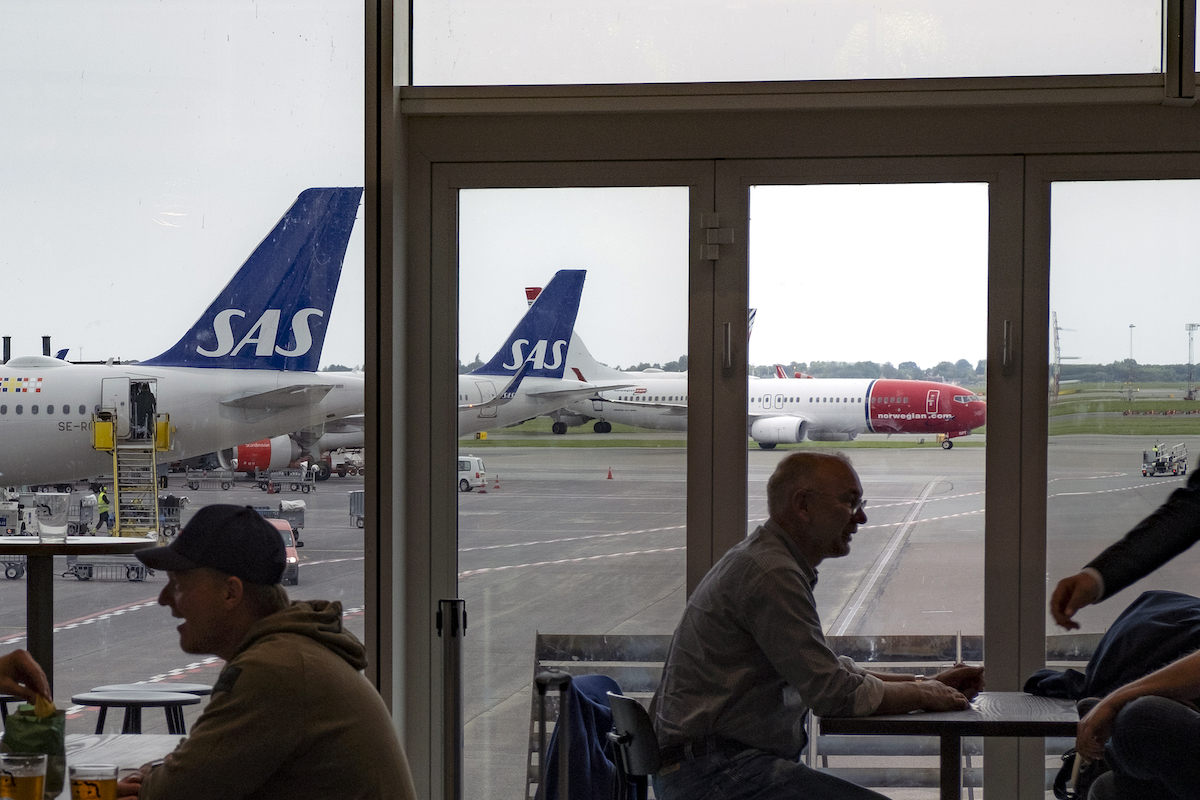Skift Take
SAS CEO Anko Van der Werff is confident in the airline's market position amid competitive challenges. But with the airline a while away from a full recovery, discounters have even more time to pounce.
The CEO of bankrupt Scandinavian airline SAS, Anko Van der Werff, does not see the carrier’s position in the northern European market as “diminished” by recent market share grabs from the likes of Norwegian Air and Ryanair.
The discount competitors are growing in SAS’ home markets: Norwegian Air in its namesake country, including with a $106 million deal to buy regional airline Wideroe; and Ryanair in Denmark with plans for a new base in Copenhagen, SAS’ largest hub by flight numbers.
Van der Werff’s comments came Friday after the Stockholm-based Star Alliance carrier unveiled its highest passenger numbers and first quarterly profit since 2019 in its fiscal third quarter — May, June, and July. SAS posted a $143 million (1.6 billion Swedish kroner) operating profit on $1.2 billion in revenue. Passenger numbers came in just shy of 7 million. All but the profit number were below 2019 levels.
SAS is restructuring under U.S. Chapter 11 bankruptcy with an aim to significantly cut costs and debt, and raise new equity. It had hoped to complete the process by this summer but now expects to exit bankruptcy by the end of the year.
The airline’s results come amid a surge in travel demand across Europe. Executives at Air France-KLM, International Airlines Group — owner of British Airways and Iberia, among others — Lufthansa Group, and Ryanair have all said similar things about demand this summer. Planes are full, and travelers are paying more than they did four years ago.
“Demand remains extraordinarily strong,” Lufthansa Group CEO Carsten Spohr said in July. “This is true for as far as we have visibility.”
The same is true for SAS’ main Nordic rival, Norwegian Air. CEO Geir Karlsen described the market as seeing “record” travel demand in the April-to-June results. Norwegian Air reported a $61 million (651 million Norwegian kroner) operating profit on $644 million in revenue. It carried 5.6 million passengers in the period.
But Norwegian is in a strong position relative to SAS. It completed its own restructuring during the pandemic in 2021, and has flown from strength-to-strength in the two years since. That includes rebuilding its fleet, relaunching its loyalty program — Norwegian Reward — with new partnerships like one with Nordic hotels group Strawberry, and the deal to buy Wideroe.
Those moves, and more, have Norwegian Air actively positioning itself to be the preferred airline of Norway’s corporate travelers — a market dominated by SAS.
“There’s no doubt that we are … taking market share, and the number of passengers on the corporate side then deciding to travel with Norwegian,” Karlsen said.
Norwegian Air’s corporate travel revenues have already exceeded 2019 levels even as volumes — as pretty much everywhere — remain down, he added.
“I don’t think that there is any diminishing from us [in] the … Norwegian market,” Van der Werff said in response to questions on Norwegian Air’s moves. “It is, as you know, traditionally our biggest market. And we have clear strongholds, right, capacity slots, but also EuroBonus.”
Van der Werff added that, even if the Norwegian Air-Wideroe merger is approved by regulators without concessions, SAS would still operate nearly half of Norway’s domestic flights.
EuroBonus is SAS’ loyalty program, which boasted more than 7 million members at the end of last year, compared to the 8.3 million members of the Norwegian Reward program as of March. EuroBonus also benefits from SAS’ membership in Star that gives members the option to use points on the alliance’s global network of airlines.
Ryanair is also an increasing threat to SAS. The airline will open its new Copenhagen base with two aircraft in December. And Ryanair, which is Europe’s largest airline, will also launch four new routes to Dusseldorf, Faro, Paris and Warsaw from the airport as part of its expansion.
“I … think it is something that we can deal with,” Van der Werff said. He added that SAS is seeing some capacity shifts to primary airports from secondary airports by discounters that negates some of the added flights in Copenhagen.
However, a review of schedule data for the year from Cirium Diio shows no capacity shifts by Ryanair to Copenhagen and away from secondary airports like, for example, Malmo, Sweden, which is just across the Oresund strait from Copenhagen. The airline will operate 41% more seats from airports in Denmark, plus Malmo, this year than in 2019. Copenhagen seats are only scheduled up 3% — the December base opening means most of the growth will be in 2024 — but Malmo has grown an impressive 268%.
Ryanair is 13% smaller, in terms of seats, in Norway this year than it was four years ago, Cirium Diio data show. It is larger in Sweden.
The Daily Newsletter
Our daily coverage of the global travel industry. Written by editors and analysts from across Skift’s brands.
Have a confidential tip for Skift? Get in touch
Tags: airlines, earnings, norwegian air, ryanair, sas, Wideroe
Photo credit: SAS and Norwegian Air planes at the Copenhagen Airport. (News Oresund/Flickr) News Oresund / Flickr
